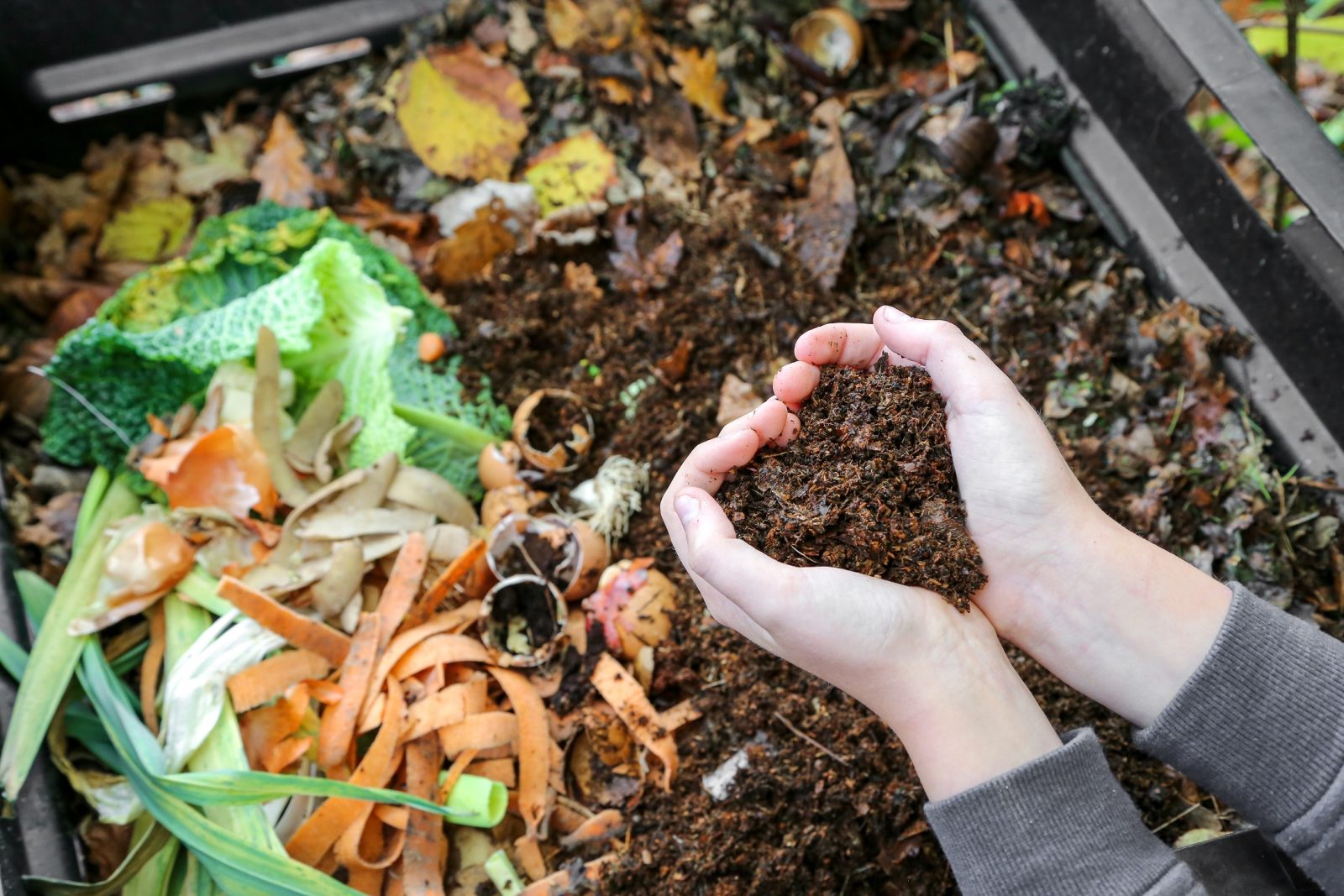
Composting is good for the planet, free, easy and gives you high quality compost for your plants. This article shares how to do it.
We should all be composting! It’s good for the planet. When food waste goes to landfill (as 6.6 million tonnes of household food does in the UK (1)) it releases methane, a greenhouse gas several times more potent than CO2. It’s free, and home composting means high quality compost for your plants without the price tag. It’s also fun, and fascinating to watch food and waste change state in one of the most important natural processes there is.
Composting is incredibly easy. You put everything biodegradable in a pile and leave it alone. That’s it. If you want to do it quickly and create a really healthy mix, there are a few more little things to know that will help. Let’s go through it step by step.
Step 1: Find or build your compost container

Many gardeners opt for the ‘dalek’ compost bin (so named for its shape). These are sleek, plastic bins with removable lids to put food waste in and a side panel to take compost out. They are discrete, protected and simple. The downsides are, they are made of plastic, and it is difficult to keep the compost inside aerated.
For a cheaper recycled option, you can make compost bays with pallets. To make one bay you’ll need three pallets: a back and two sides. To make two bays, you’ll need five. These can be lashed together with some rope. The benefit of having two bays is that you can easily turn the compost (more on this later). They do tend to take up more space though.
If you don’t have access to outdoor space, you can still compost your food waste with a worm bin. You can order worms online (or ask friends to relocate some of theirs). Containers can be homemade with old drawers or bins. Or you can buy one. Worms are a bit fussier about what they’ll eat. They don’t like oil, onions or citrus and they need something gritty like egg shells to help them digest their food.
Step 2: Find the right spot for your compost
A simple step, but important.
Put your compost somewhere accessible and out of the way, and if possible, directly on top of soil. This will allow easy access for worms and all the other microorganisms you need.
It’s also a good idea to have your compost somewhere shaded to prevent it from drying out in the summer.
Step 3: Start to fill it

Before loading it up with food and garden waste creating a foundation of twigs and sticks will help keep your pile aerated.
When putting food or garden waste in you want to also add cardboard and/or woodchip. This is because good decomposition requires a balance of what’s called ‘greens’ and ‘browns’. Greens refer to food waste and green garden waste that is high in nitrogen. Browns refers to cardboard of woody material that is higher in carbon. If you have too much green waste if your compost starts to smell, and too much brown if it starts to look dry, inactive and filled with woodlice.
As well as balancing greens and browns it is also important to keep it moist and aerated. If it becomes too waterlogged it will produce anaerobic bacteria that can be harmful to soil ecosystems. If it becomes too dry it won’t be able to decompose properly. Keep a non-leaching plastic cover over the top to regulate how much water gets in.
Lastly, leave out animal products to avoid attracting vermin. In some places it may also be advisable to leave out any cooked produce, however this isn’t always an issue.
Step 4: Knowing when it’s ready and processing the compost

As a general rule of thumb, the longer you leave compost the better. I would suggest at least 3 months after the last addition. Compost should no longer be warm from decomposition and should smell good like the earth.
To process the compost you may want to buy (or make with chicken wire) a sieve and filter out the larger bits of wood or undecomposed matter which can go back in the next batch. What you’re left with will be a great addition to any vegetable beds and potting mix.
It’s important to remember that compost is not quite soil, and if you’ve been adding food waste it will be extremely fertile. Be cautious using it to raise new plants and in potting mixes. Add some inert matter like sand and coir to give it structure and lower the nutrient density.
Top tips for speeding up your compost
If you’re keen to make compost quickly there are a few things you can do to speed it up. This includes adding coffee grounds, which most cafes are happy to part with for free. It also includes turning it regularly. It’s a good idea to do this at least once in a compost pile’s lifetime regardless, to keep it aerated and make sure that everything decomposes properly. The more you do it, the faster the more oxygen available to the bacteria and the faster the decomposition process. When turning your compost pile you should be aiming to move the top to the bottom and the outsides to the inside. A note of caution, turning the compost does frighten off certain beneficial microorganisms, like nematodes, so I’d recommend leaving it for a month or two after the last turn to invite them back.
References
- Food waste falls by 7% per person in three years. WRAP. Accessed July 15, 2023. https://wrap.org.uk/media-centre/press-releases/food-waste-falls-7-person-three-years





























